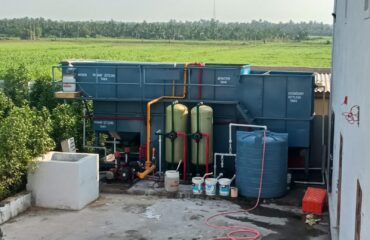Introduction
Trichy, a city steeped in history and culture, is also a bustling hub of industries and urban activities. As the city continues to grow, the establishment of an Effluent Treatment Plant (ETP) emerges as a crucial step towards preserving its environment and promoting sustainable development. The ETP in Trichy plays a pivotal role in ensuring that industrial progress goes hand in hand with ecological preservation.
Understanding ETPs
An Effluent Treatment Plant (ETP) is a sophisticated system designed to treat and purify wastewater generated by various sources, including industries and urban settlements. Through advanced treatment processes, ETPs aim to remove pollutants and contaminants from wastewater before it is released into the environment, thereby preventing harm to ecosystems and human health.
Significance of ETPs in Trichy
1. Environmental Conservation
Trichy’s landscape is adorned with natural beauty, from its lush greenery to its serene water bodies. The ETP in Trichy plays a crucial role in maintaining this beauty by treating wastewater before it reaches rivers and lakes. This proactive approach helps in preserving the aquatic ecosystems and ensuring the well-being of the environment.
2. Pollution Mitigation
Industries often generate wastewater laden with hazardous chemicals and pollutants. ETPs act as a shield against pollution by effectively treating this wastewater, thus preventing the contamination of air, water, and soil.
3. Public Health Protection
Untreated wastewater can pose significant health risks to the public due to the presence of pathogens and pollutants. ETPs ensure that the treated wastewater is safe for discharge or reuse, safeguarding the health and well-being of the community.
4. Sustainable Resource Management
The treated wastewater from ETPs can be utilized for non-potable applications such as irrigation and industrial processes. This promotes the efficient use of water resources and reduces the burden on freshwater reserves.
Key Components of ETPs
- Preliminary Treatment: This initial phase involves the removal of large particles and debris from the wastewater through processes like screening and sedimentation.
- Primary Treatment: In this step, suspended solids are further settled and removed from the wastewater through sedimentation tanks.
- Secondary Treatment: Biological processes utilizing microorganisms help break down organic matter present in the wastewater.
- Tertiary Treatment: Advanced techniques like filtration and disinfection ensure that the water meets high-quality standards before it is released or reused.
- Effluent Reuse or Discharge: The treated water can be safely discharged into the environment or repurposed for various applications, promoting sustainable water use.
Challenges and Solutions
- Awareness Campaigns: Educating industries and the public about the importance of responsible waste disposal and wastewater treatment is essential.
- Technological Advancements: Incorporating state-of-the-art technologies can enhance the efficiency and effectiveness of ETPs, leading to better treatment outcomes.
- Collaboration: Successful wastewater management requires collaboration between industries, local authorities, and communities to ensure the optimal functioning of ETPs.
Conclusion
The Effluent Treatment Plant in Trichy is a symbol of the city’s commitment to balancing industrial progress with environmental preservation. It serves as a reminder that sustainable growth is achievable through responsible waste management practices. As Trichy continues to evolve, the ETP stands as a testament to the harmonious coexistence of development and nature. It is a beacon that guides the city towards a future where industrial prosperity thrives alongside a healthy and thriving environment.





